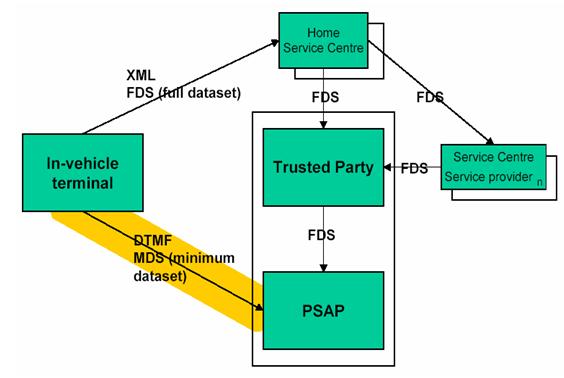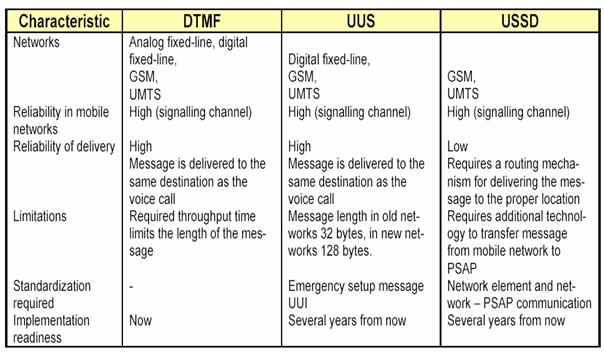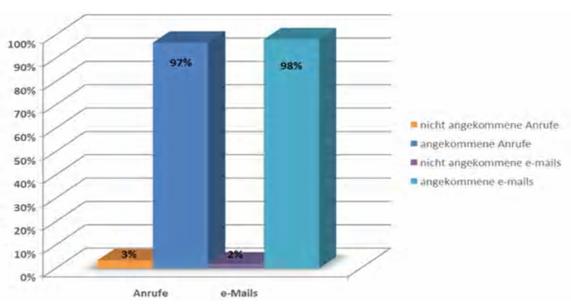Technical Paper Title: E-Call
Authors: Y.ALEKHYA & B.MOUNIKA, 1st BTech, ECE
College: Prakasam Engineering College, Kandukur
ABSTRACT:
This paper explain you about how to reduce the accident response time using the wireless communication ,what the technology used in it and also what are the hardware and software required for this type of communication , how this technology works in saving an accident victim and what are the other uses of this system once it comes into existence
CONTENTS:
1) INTRODUCTION
2) NEED TO REDUCE THE ACCIDENT RESPONSE TIME
3) HARD WARES REQUIRED
4) PRINCIPLE
5) WORKING
6) ADVANTAGES
7) CONCLUSION
INTRODUCTION:
Imagine you had a serious accident and no one saw it or even worse: no one is there. What do you do if you are injured or trapped in the vehicle on a lightly traveled country road and need help? Then this technology will help you and save your life. In the event of an accident, these systems immediately transmit an emergency call to the local rescue service either manually or no manually (on its own). The communication says not only that something has happened but also how serious the accident is and gives the location of the vehicle involved in the accident.
NEED TO REDUCE THE ACCIDENT RESPONSE TIME:
Over 100,000 die in Indian road accidents in a year. India has the world’s highest number of road accident deaths, and it is steadily climbing every year. The World Road Statistics 2006, which provides the data for the year 2003 in respect of India, indicates that the number of persons killed per lakh of population in India is 8.08 .The number of deaths due to road accident is estimated at more than a lakh (1, 01,439) during the year 2006 as compared to the figure of 94,968 deaths for the year 2005. In these accidents many occur at highway, Most of the fatalities occur soon after the accident. Statistics says that 30 percent of deaths occur within minutes of the crash. Fifty percent occur before the victim arrives at a hospital. Fully 70 deaths occur within two hours of a crash. Reducing medical response time to one minute would translate into saving approximately 30,000 lives per year. It also reduces severity of survivors’ injuries, shortening their recovery time and decreasing their medical costs.
HARDWARES REQUIRED:
1) Tri-axial accelerometer: A sensor measures acceleration and deceleration forces in all three planes to determine the force of a crash.
2) Seat weight sensors: Determine which seats are occupied.
3) Safety belt sensors: Determine which safety belts are buckled.
4) Air bag sensors: Determine which air bags, if any, were deployed and at what force.
5) GPS receiver: Determines direction of travel and the vehicle’s precise location.
6) CMOS camera: Located in the dome light, it captures a single image of the vehicle interior after a crash incident.
7) Flash memory: Records the 200 ms duration of the crash pulse, including 50 ms of pre-crash data.
8) On-board microprocessor: Compiles data to compute an accurate portrayal of the incident.
9) Onboard communications: Data is transmitted to the vehicle owner’s cellular phone through a short range communications system that uses a radio transceiver built into tiny microchips. It allows a high transfer rate of secure data, even in noisy environments, with low power consumption.
10) Cellular phone: Automatically calls emergency rescue authorities and transmits vital crash data via cellular modem.
11) Power supply: An independent source assures that all components of the Rescue Car system can function if the vehicle’s main battery is damaged in the crash.
PRINCIPLE:
Actually it works either with the human intervention or even without it. By pushing a button in the car, the call to the emergency centre can also be made manually. In either case, be it made manually or automatically, there will also always be a voice connection between the vehicle and the rescue centre in addition to the data link. Thus, further details on the accident can be given if anybody in the car is capable of speaking and answering questions
In the event of an accident, the on-board e-Call device transmits an emergency call to the most appropriate public service answering point (PSAP) along with certain vehicle-related data (notably the vehicle’s precise location). The emergency call can be triggered either manually by the occupants of the vehicle or automatically, in the event of a serious accident, thanks to sensors installed in the vehicle.
WORKING:
When in the event of an accident a car senses a major impact, its e-Call device automatically calls the nearest emergency centre (Public Safety Answering Point – PSAP). For the calls to work all over the European Union, the single European emergency number 112 is used. The car transmits a so-called minimum set of data.
The exact geographic location of the crashed car is part of the set. The fact that the rescue services immediately get the accurate location data drastically cuts their response time: the ambulance, to pick an example, will be on the spot much quicker. By pushing a button in the car, the call to the emergency centre can also be made manually. In either case, be it made manually or automatically, there will also always be a voice connection between the vehicle and the rescue centre in addition to the data link. Thus, further details on the accident can be given if anybody in the car is capable of speaking and answering questions. The message sent within the emergency call contains a minimum data set (MDS): location, speed, driving direction, vehicle type, cargo type and a vehicle terminal identifier. The terminal can send a larger set of data via mobile data connection (e.g. GPRS) to a service centre, which is able to reroute the full data set (FDS) to the PSAP.
1.Vehicle to PSAP communications are implemented using existing communications technologies, networks and standards
TYPES OF SENDING MDS:
- 1. DTMF –messaging: Short description
DTMF (Dual Tone Multi Frequency) is a technology used for delivering short messages from a telephone to a receiving service or a mobile services switching centre. DTMF is used in various telephony services (”Dial 1 if you wish to contact help desk”, “please type in your PIN code”). DTMF is delivered in signaling channel from a GSM-terminal to a mobile services switching centre, thus making it extremely reliable messaging within a GSM network. DTMF is already implemented and available in all GSM networks and thus does not require new standardization or technology. It is also supported in all current fixed-line networks. This makes using DTMF for e-Call cost-efficient and quick to implement EU-wide.
2. UUS-messaging: Short description
An ISDN value-added service UUS (User to user signaling) enables a two-directional limited length message (UUI) delivery from a terminal to another during call setup and voice call. UUS is standardized for both digital fixed networks and GSM. UUS service has not been implemented in all EU member states though most terminal devices and network equipment have built-in support for it. The main reasons have been the lack of commercial need and fear of fraudulent use. The current GSM standards for emergency call setup message do not include a UUI field, so implementing UUS for e-Call requires altering current GSM standards. Implementation requires telecom operators investing in telecommunications network infrastructure.
3. USSD-messaging: Short description
USSD (Unstructured Supplementary Service Data) is used for delivering short messages from the mobile terminal to mobile network servers. It is only in mobile networks. Using USSD in MDS messaging would require defining a new server in the mobile network to handle the messages and route them via fixed network to the PSAP. Standardization of the service would be required before USSD could be used in implementing e-Call. Investments in the network would also be required. It will take several years.
An overview of characteristics of each technology is presented in the following table.
MDS-message should contain only the essential data required by the PSAP to locate the vehicle and efficiently manage the emergency response. Direct, real-time message (MSD) PSAP operator receiving the 112 voice call including Time of incident ,Exact location including direction of driving Vehicle identification e-Call qualifier giving the severity of the incident (currently automatic/manual) Identification of service provider. Also this type of e-call also has options such as voice call, sms as alarming mediums. As both of them are used predominantly now-a-days, their respective advantages are given below
1. Voice call as an Alarm Medium: The advantage of an accident message via voice call is that it’s not necessary to have a SIM-Card installed for emergency call to the emergency number. Originating from the current technical structure of the emergency centers a system would be required, which initiates a voice call to emergency number and advises the coordinates of the accident using a voice processor. A web database with connection to a map server would enable the emergency centre clarify the identity of the owner as well as the cars position. But on the other hand, if a voice call, an accident with a significant physical damage of the car, could be guaranteed. In addition to that, a system like that will be unsuitable for other services like theft tracking, breakdown serve, etc.
2. SMS as an Alarm Medium: For transmitting a SMS-Message it’s necessary to have SIM-Card installed. As a consequence the provider has to be refunded by a basic fee or other ways of revenue. The advantage of SMS is that you need less GSM reception than for a voice call. Furthermore it is rather ensured, that the alarm can be sent, in consideration of damaging of the vehicle caused by an accident. In addition this way of transmitting enables the integration of external operation centers at this stage.
Thus the figure shows that in both the ways the efficiency of communication is almost same, so we can go for any of them regarding our requirements. The e-Call-system is designed so that additional data will be sent through the service centre in FDS-message.
2. Detection and operation of e-call devices inside the vehicle using sensors and equipment & steps of detection
Steps involved in detection of accident:
1. Pre-certification
By making this mandatory for all vehicles and certifying them with specific codes it will be much easier to detect the identity of affected persons and in informing the news to their family members.
It is applicable if the following terminal interface specifications are made mandatory
i. Antennas, external sensors, vehicle bus
ii. Vehicle installation matrix
2. Application tests
The following tests are made in the real time to estimate the occurrence, intensity of the accident and details regarding it. These tests are related sensors that are attached to safety apparatus of a vehicle. They detect the impact and estimate the severity of the accident.
i. Manual initialization of the e-Call function doesn’t depend on any sensors but will be invoked by the persons in vehicle.
ii. Automatic initialization of the e-Call function happens in relation of occurring of any of the tests mentioned below
a. Airbag detection
b. Rear impact detection
c. Side impact detection
d. Frontal impact detection
e. Rollover detection
f. Temperature rise (fire) detection
4. Environmental tests
Also the automatic initialization of e-call will happen also in case of detection of any of the following conditions:
a. High ambient temperature
b. Low ambient temperature
c. Loss of external power source
d. Impact resistance
e. Vibration resistance
f. Temperature and humidity cycling
g. Mobile data services not available
ADVANTAGES:
E-Call will make a large contribution by reducing the number of fatalities and mitigating the severity of injuries. As mentioned earlier the primary task of this system will be to save the lives of people from accidental deaths. its advantages are given below
1. Studies show that the emergency response time could be reduced by about 50% in rural areas and 40% in urban areas.
2. It is estimated that the e-Call system could save up to 2 500 lives a year in the EU and, in particular, could significantly reduce the severity of the injuries sustained in 15% of cases.
3. Studies show that the reduction of response time has pattern of
40%-in urban areas
50%- in rural areas
4. Also the gps tracker in the vehicle helps to find the location of the car when it is stolen, thus it helps to find about missing vehicles also.
5. The system will also ensure a corresponding reduction in the number of traffic jams attributable
Once the system comes into use there could be many more direct or indirect advantages.
CONCLUSION:
There by we conclude that this e-call technology is highly efficient and is going to play a predominant role in future emergency service system. But in practical perception the government must take the responsibility of implementing this technology and take all the measures to make the best use of this e-call and we can handle one of the serious concern of today’s leap in the number of accidental deaths. the day is not far when each and every car or vehicle is equipped with the e-call devices and the passengers and drivers can be assured of a healthy drive and a pleasant ride.





